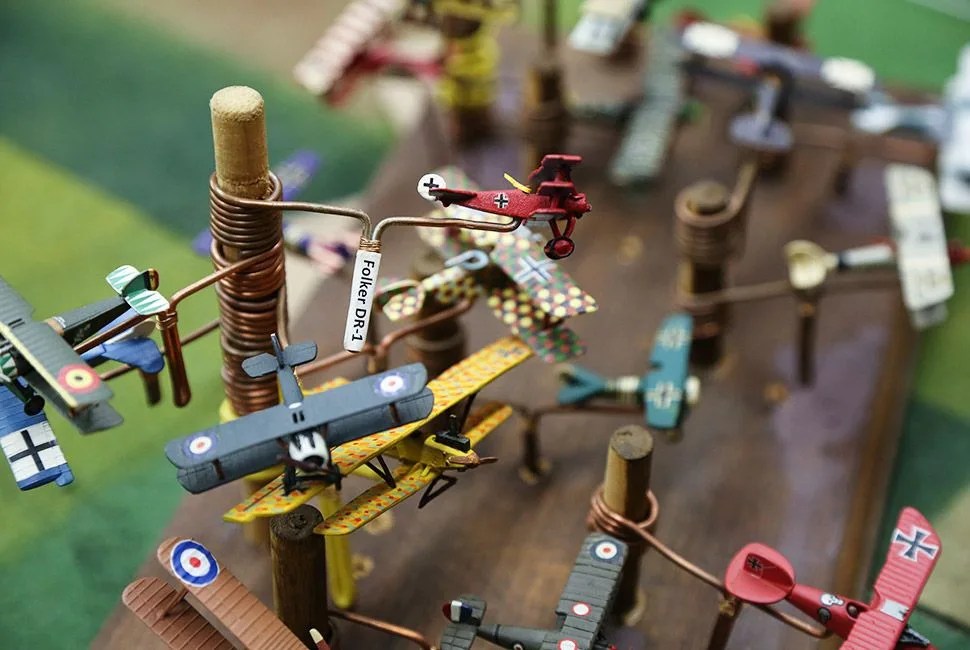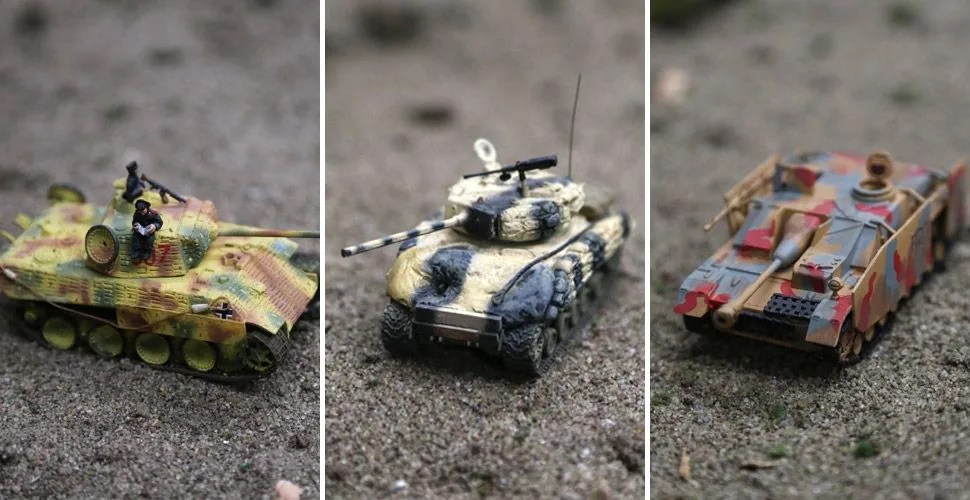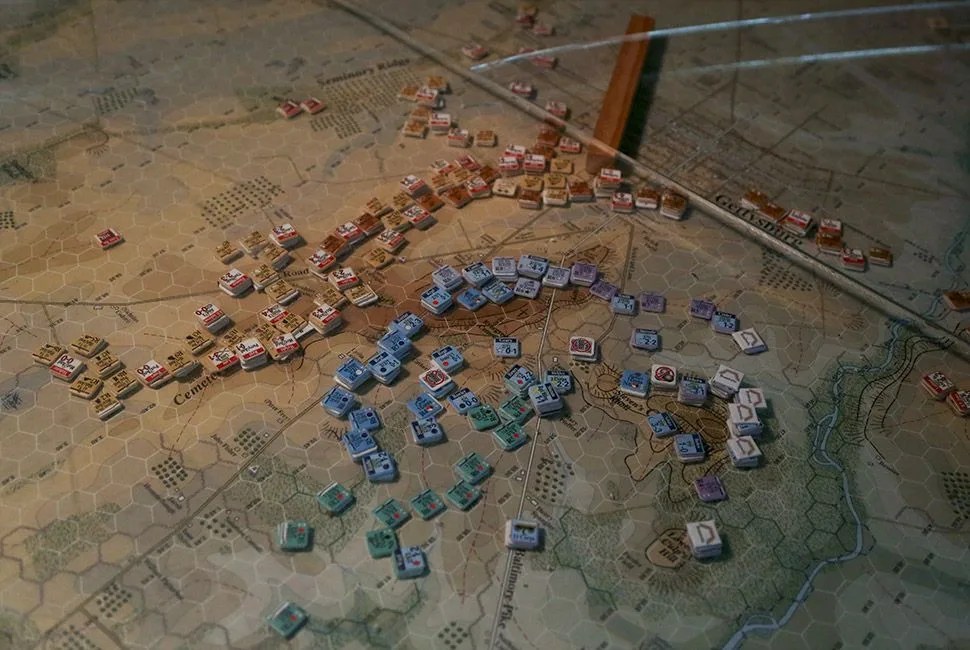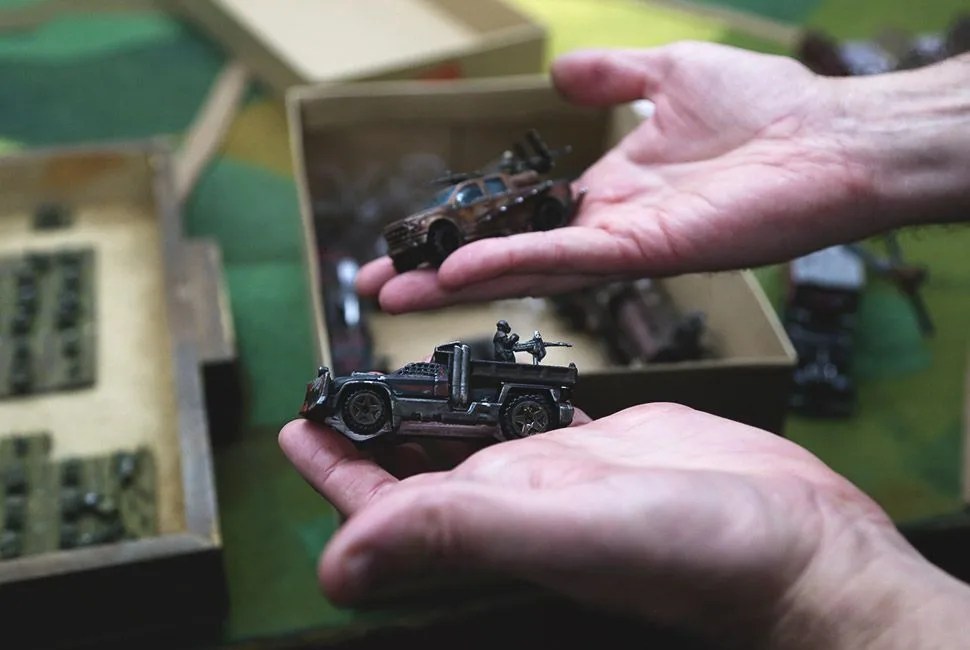The sand table in the back room of the Metropolitan Wargamers club smells faintly of cat litter. It’s a Sunday, and the club is empty, alone with its harsh overhead lighting and shelves full of board games and rows of miniature armies. Turns out on Sundays, the vast majority of the club’s gamers are off watching football.
All the more lonely, then, is the Sherman tank advancing uphill toward a German gun emplacement and a Tiger tank camouflaged among a grove of trees. In the background, another Sherman, less lucky, burns in a column of black-painted cotton — smoke. Everything on this, the club’s sand gaming table, is a lifelike model, all painted with vibrant, intricate detail, so that the scene carries an eerie resemblance to a tilt-shift photograph, a technique that makes the real world look like a game. If I try a little, I can practically hear the boom of the tanks’ big guns, feel the grumble of the treads in my gut.
These are tiny, but they aren’t toys. They are models in an historical replaying, governed by a thick set of rules that dictate how easy or difficult movement, reloading and firing are for each actor on the field; the fate of every action — whether a shot hits or misses and how much damage it does — is dictated by a roll of the dice. (Some games even include rules for unit morale; face enough horror or hardship and the men might flee.) James Grotto, a thickly accented Brooklynite and the preeminent WWII miniatures gamer of the club, produces a long metal box and sets its bottom end on the sand at the front of the heroic, lone Sherman. A periscope. The gamers use it to see down onto the battlefield, in the inverse of a sub’s use of the same tool, to see downward into the point of view of their models as they play. I peer into the periscope and see in the mirror the Tiger tank’s barrel aimed right at me. It’s a condensed, tight view, and shocking — the perspective of a doomed gunner.

This is what one really needs to understand the appeal of model armies that cost hundreds and even thousands of dollars, or complex battle reenactments on enormous maps that take up to a year of stop-and-start playing to complete: perspective. Not that these gamers need to be defended. All they’ve done is bring gaming with plastic miniatures and square cardboard markers as close to real life as humanly possible.
“Could you have done better than Napoleon at Waterloo? Well, let’s find out.”
Fourteen gamers founded Metropolitan Wargamers in 1984. Today the club operates as a nonprofit organization, with around 40 members — lawyers and businessmen, bus drivers and construction workers, students and veterans — mostly men of all ages, a few women, some girlfriends that tag along. Members here pay $40 a month and have a key and 24/7 access to the club, a long thin basement at the bottom of a Park Slope, Brooklyn brownstone. It’s a sweet deal.



